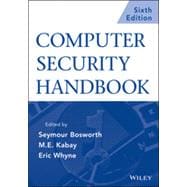Computer security touches every part of our daily lives from our computers and connected devices to the wireless signals around us. Breaches have real and immediate financial, privacy, and safety consequences. This handbook has compiled advice from top professionals working in the real world about how to minimize the possibility of computer security breaches in your systems. Written for professionals and college students, it provides comprehensive best guidance about how to minimize hacking, fraud, human error, the effects of natural disasters, and more. This essential and highly-regarded reference maintains timeless lessons and is fully revised and updated with current information on security issues for social networks, cloud computing, virtualization, and more.








